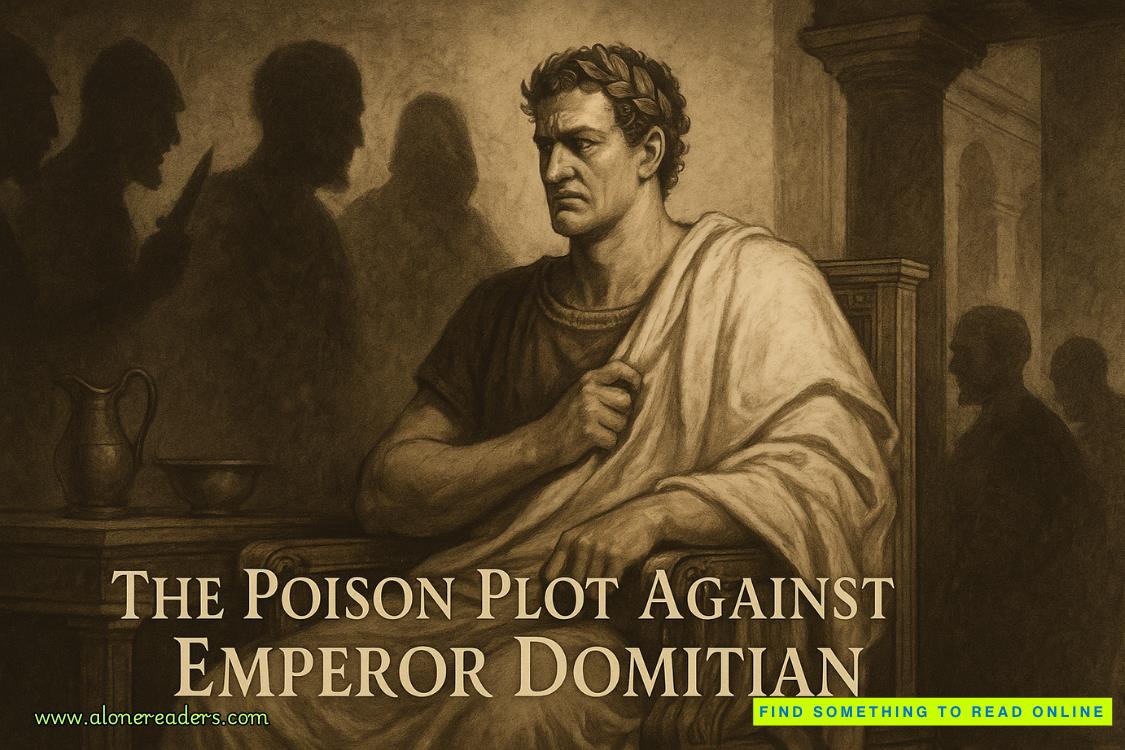Page 7 of The Doomsday Key (Sigma Force 6)
“Fine. But I want a rematch. You had an unfair advantage.”
“Advantage? Me?” Monk stripped off one of his gloves to expose his prosthetic hand. “I’m missing my hand. Along with a fair amount of my long-term memory. And been on disability for a year. Some advantage!”
Still, the grin never wavered as Monk offered his DARPA-engineered prosthetic. Gray took the hand, feeling the cold plastic fasten firmly on him. Those same fingers could crush walnuts.
Monk pulled him to his feet.
As Gray brushed wet leaves from his Kevlar motorcycle suit, his cell phone chimed from his breast pocket. He pulled it out and checked the Caller ID. His jaw tightened.
“It’s HQ,” he told Monk and lifted the phone to his ear. “Commander Pierce here.”
“Pierce? About time you picked up. I’ve called you four times in the past hour. And may I ask what you are doing in the middle of a forest in Virginia?” It was Gray’s boss, Painter Crowe, director of Sigma.
Fighting for some adequate explanation, Gray glanced back at his motorcycle. The bike’s GPS must have betrayed his location. Gray struggled to explain, but he had no adequate excuse. He and Monk had been sent from Washington to Quantico to attend an FBI symposium on bioterrorism. Today was the second day, and Gray and Monk had decided to skip the morning lectures.
“Let me guess,” Painter continued. “Out doing a little joyriding?”
“Sir…”
The sternness in the director’s voice softened. “So did it help Monk?”
As usual, Painter had surmised the truth. The director had an uncanny ability to assess a situation. Even this one.
Gray looked over at his friend. Monk stood with his arms locked across his chest, his face worried. It had been a hard year for him. He had been brutalized in an enemy’s research facility where a part of his brain had been cut out, destroying his memory. Though he had recovered what was left, gaps remained, and Gray knew it still haunted him.
Over the last two months, Monk had been slowly acclimating back to his duties with Sigma, restricted though they might be. He was on desk duty and offered only minor assignments here in the States. He was limited to gathering intel and evaluating data, often beside his wife, Captain Kat Bryant, who also worked at Sigma headquarters and had a background in Naval Intelligence.
Gray knew Monk was straining at the bit to do more, to gain back the life that had been stolen from him. Everyone treated him as if he were a fragile piece of porcelain, and he’d begun to bristle at all the sympathetic glances and whispered words of encouragement.
So Gray had suggested this cross-country race through the park that bordered the Quantico Marine Corps Reservation. It offered a chance to blow off some steam, to get a little grit in the face, to take some risk.
Gray covered the phone with his hand and mouthed to Monk, “Painter’s pissed.”
His friend’s face broke into a broad grin.
Gray returned the phone to his ear.
“I heard that,” his boss said. “And if you’re both done having your bit of fun, I need you back at Sigma Command this afternoon. Both of you.”
“Yes, sir. But can I ask what it’s about?”
A long pause stretched as if the director was weighing what to say. When he spoke, his words were careful. “It’s about the original owner of that motorcycle of yours.”
Gray glanced at the crashed bike. The original owner? He flashed back to a night two years ago, remembering the roar of a motorcycle down a suburban street, running with no lights, bearing a deadly rider, an assassin of mixed loyalties.
Gray swallowed to gain his voice. “What about her?”
“I’ll tell you when you get here.”
1:00 P.M.
Washington, D.C.
Hours later, Gray had showered, changed into jeans and a sweatshirt, and sat in the satellite surveillance room of Sigma headquarters. He shared the space with Painter and Monk. On the screen shone a digital map. It traced a crooked red line from Thailand to Italy.
The path of the assassin ended in Venice.
Sigma had been tracking her for over a year. Her location was marked by a small red triangle on a computer monitor. It glowed in the middle of a satellite map of Venice. Buildings, crooked streets, and winding canals were depicted in precise gray-scale detail, down to the tiny gondolas frozen in place, capturing a moment in time. That time was shown in the corner of the computer monitor, along with the approximate longitude and latitude of the assassin’s location:
10:52:45 GMT OCT 9
LAT 41°52'56.97"N
LONG 12°29'5.19"E
“How long has she been in Venice?” Gray asked.
“Over a month.”
Painter ran a tired hand through his hair and narrowed his eyes in suspicion. He looked exhausted. It had been a difficult year for the director. Pale from spending much of the day in offices and meetings, Painter’s mixed Native American heritage was only evident in the granite planes of his face and the streak of white through his black hair, like a tucked snowy feather.
Gray studied the map. “Do we know where she’s staying?”
Painter shook his head. “Somewhere in the Santa Croce area. It’s one of the oldest neighborhoods of Venice, not very touristy. A maze of bridges, alleys, and canals. An easy place to keep hidden.”
Monk sat back from the other two, adjusting the connection of his prosthetic hand. “So why did Seichan pick that city of all the places in the world to hole up?”
Gray glanced to the corner of the monitor. It displayed a photo of the assassin, a woman in her late twenties. Her features were a mix of Vietnamese and European descent, possibly French, with her bronzed skin, slender features, and full lips. When Gray had first met her three years ago, she’d almost killed him, shooting him point-blank in the chest. Even now he pictured her in that same turtlenecked black bodysuit, recalling how it had hugged her lithe form, hinting at both the hardness and softness that lay beneath.
Gray also pictured their last association. She’d been captured and held prisoner by the U.S. military, badly bloodied and recovering from abdominal surgery. At the time, Gray had helped her escape custody, paying back a debt owed after she had saved his own life—but her freedom had not come without a price.
During the surgery, Gray’s boss had a passive polymer tracker secretly planted in her belly. It was a condition for her release, extra insurance that they’d be able to monitor her location and movements. She was too important to let go, too intimately tied to a shadowy terrorist network known as the Guild. No one knew anything about the true puppetmasters of that organization—only that it was well entrenched and had tendrils and roots globally.















